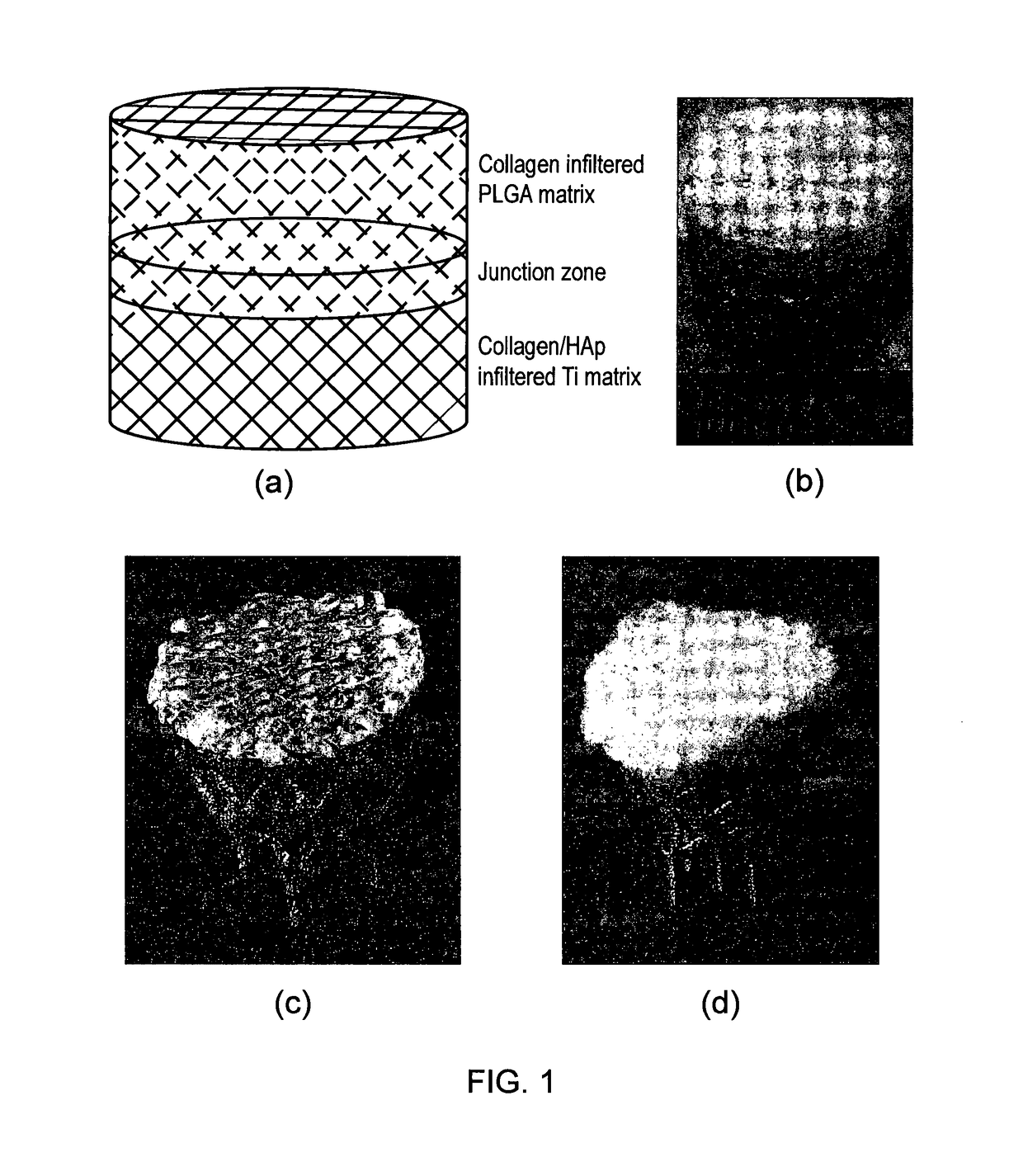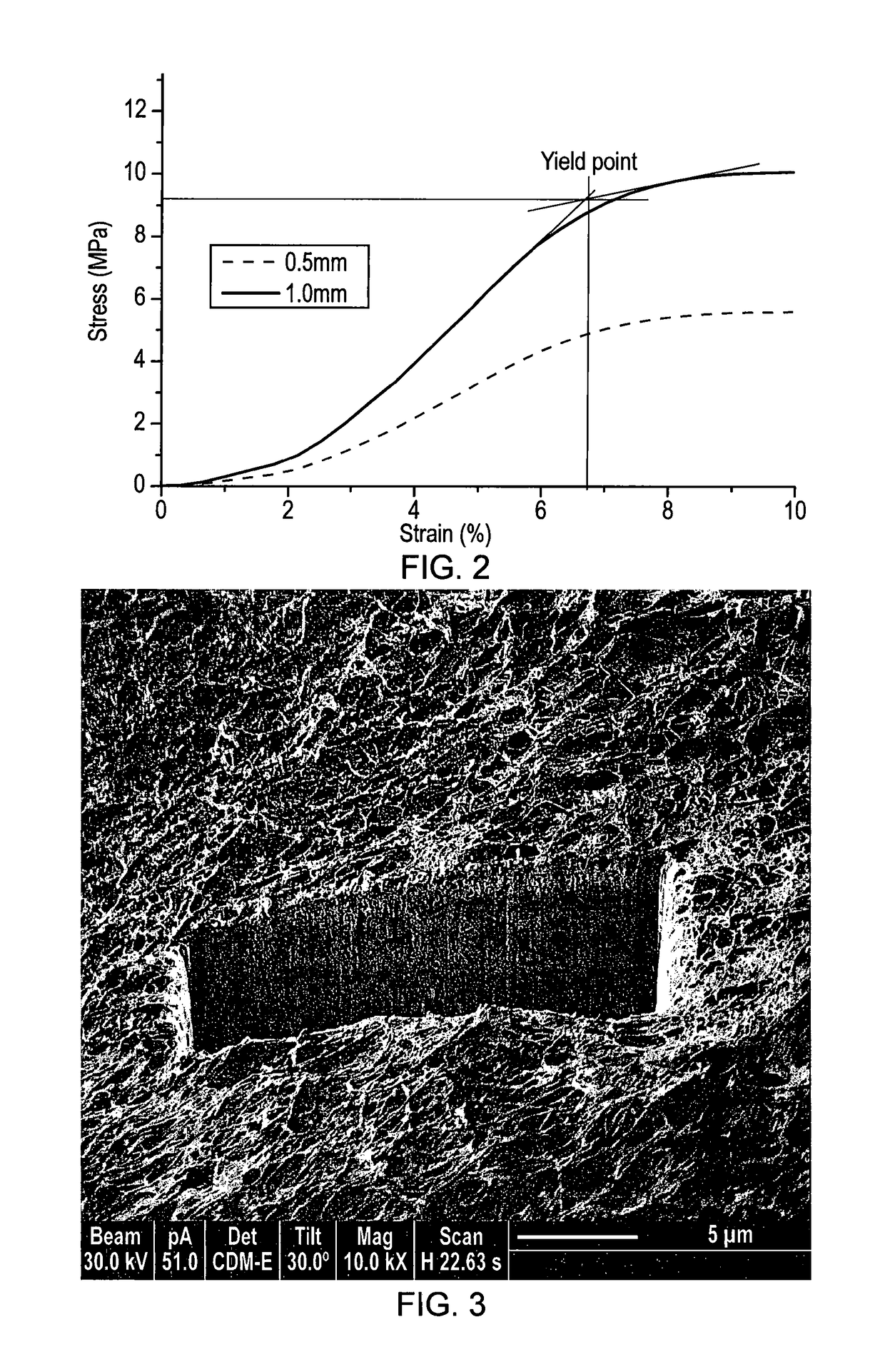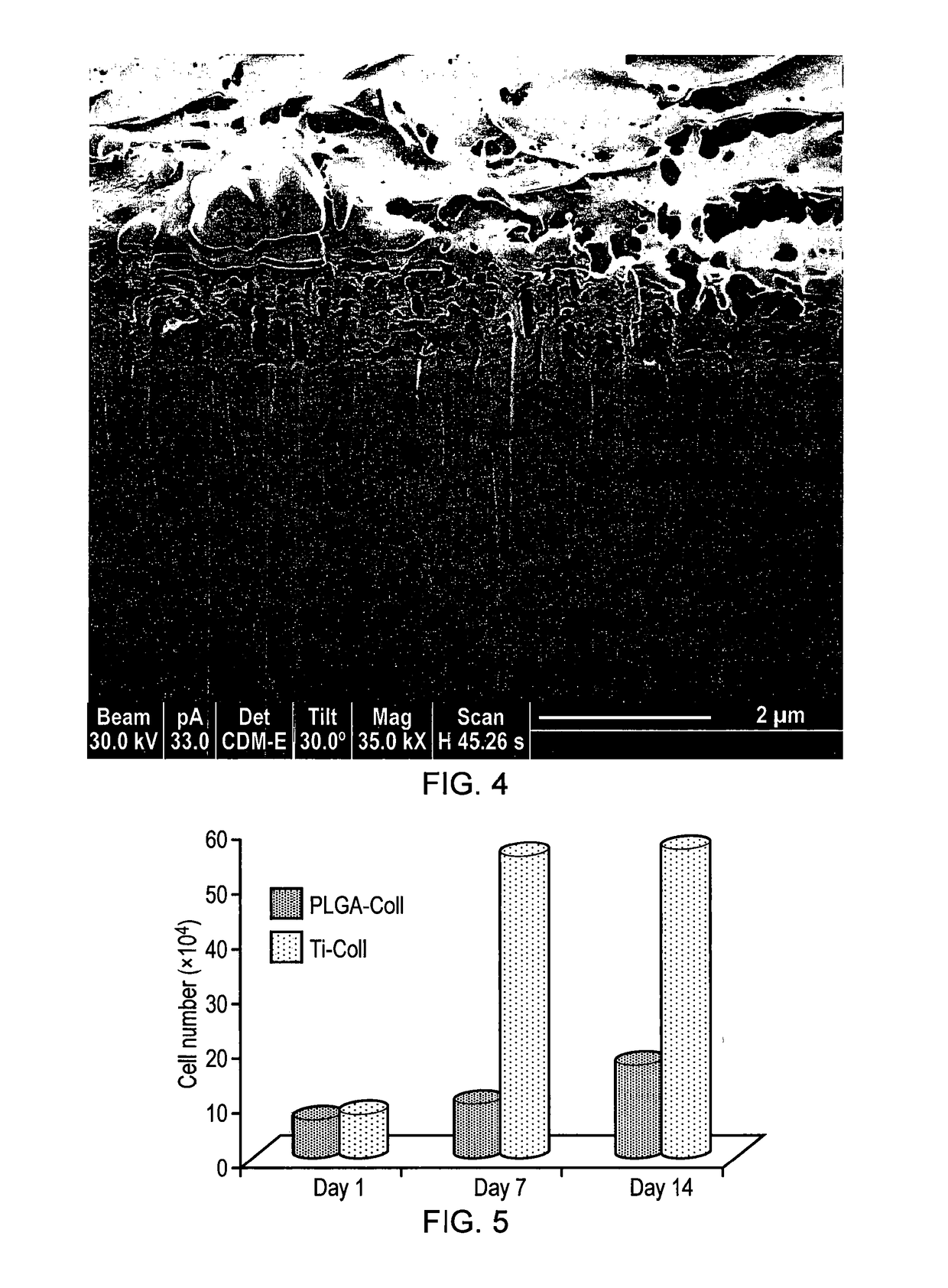Osteochondral scaffold
a scaffold and osteochondral technology, applied in the field of osteochondral scaffolds, can solve the problems of reduced joint function, limited availability, and individual pain of oa, and achieve the effects of easy delivery to the osteochondral defect, stable physical environment, and healthy growth of the overlying cartilag
- Summary
- Abstract
- Description
- Claims
- Application Information
AI Technical Summary
Benefits of technology
Problems solved by technology
Method used
Image
Examples
example 1
oxyapatite Coating Improves Cell Growth on Titanium Matrix
[0111]Titanium scaffold is used for the bone section of the osteochondral scaffold. Sheep bone marrow derived stem cells were used for evaluation of the cellular performance. Examination revealed that the cells attached to the titanium surface and can proliferate in the titanium scaffold over the 28 days culture period, as demonstrated by Alamar blue analysis shown in FIG. 6.
[0112]To improve the cells growth and bone formation within the titanium matrix, the titanium scaffold could be coated with a thin layer (1-10 micro meter) of nano-hydroxyapatite by electro-chemical deposition technique, as shown in FIG. 7a. The in vivo evaluation using sheep bone marrow derived stem cells indicated an increase in number of cells seeded on the scaffolds within 21 days, and presence of metabolically active and proliferating cells on both HA coated and non-coated samples, as shown in FIG. 7b Alamar blue analysis indicated that the cells on ...
example 2
Evaluation of the Osteochondral Scaffold
[0113]Sheep bone marrow mesenchymal stem cells were used to evaluate the in vitro performance of the tri-layered osteochondral scaffold based on the titanium / PLGA / collagen system. Tri-layered collagen-hydroxyapatite osteochondral scaffold was used as control. The tissue culture was performed in static culture in normal culture medium. Alamar blue analysis indicated an increase in number of cells seeded on the scaffolds within 21 days (FIG. 8). The presence of metabolically active and proliferating cells on both the invented osteochondral scaffold and on the control scaffold were shown within 21 days culture. The titanium / PLGA / collagen osteochondral scaffold exhibited persistent higher Alamar blue activity than the control scaffold over 21 days' culture.
example 3
chondral Scaffold Achieves Stable Mechanical Fixation
[0114]Sheep condyle and Sawbone were used to test the mechanical fixation of the scaffold. For this test, cylindrical osteochondral scaffold comprised of a lower titanium section and an upper PLA section. Multi-layered collagen-hydroxyapatite composite scaffolds were used as control. The mechanical fixation was determined in terms of interface shear strength and push-in and push-out strength. It was observed that both PLA and titanium-PLA scaffold have higher interface shear strength than the control scaffold in both sheep condyle and Sawbone model tests. In both cases, titanium-PLA double layers composite scaffold exhibited the higher interface shear strength, as shown in FIG. 9a.
[0115]The titanium scaffold was further evaluated in sheep chodyle model by push-in and push-out tests. It revealed that the push-in strength for a 10 mm diameter 10 mm thick cylindrical scaffold reached 2.43 MPa for titanium scaffold and 2.53 MPa for t...
PUM
| Property | Measurement | Unit |
|---|---|---|
| unit cell size | aaaaa | aaaaa |
| unit cell size | aaaaa | aaaaa |
| porosity | aaaaa | aaaaa |
Abstract
Description
Claims
Application Information
 Login to View More
Login to View More - R&D
- Intellectual Property
- Life Sciences
- Materials
- Tech Scout
- Unparalleled Data Quality
- Higher Quality Content
- 60% Fewer Hallucinations
Browse by: Latest US Patents, China's latest patents, Technical Efficacy Thesaurus, Application Domain, Technology Topic, Popular Technical Reports.
© 2025 PatSnap. All rights reserved.Legal|Privacy policy|Modern Slavery Act Transparency Statement|Sitemap|About US| Contact US: help@patsnap.com



